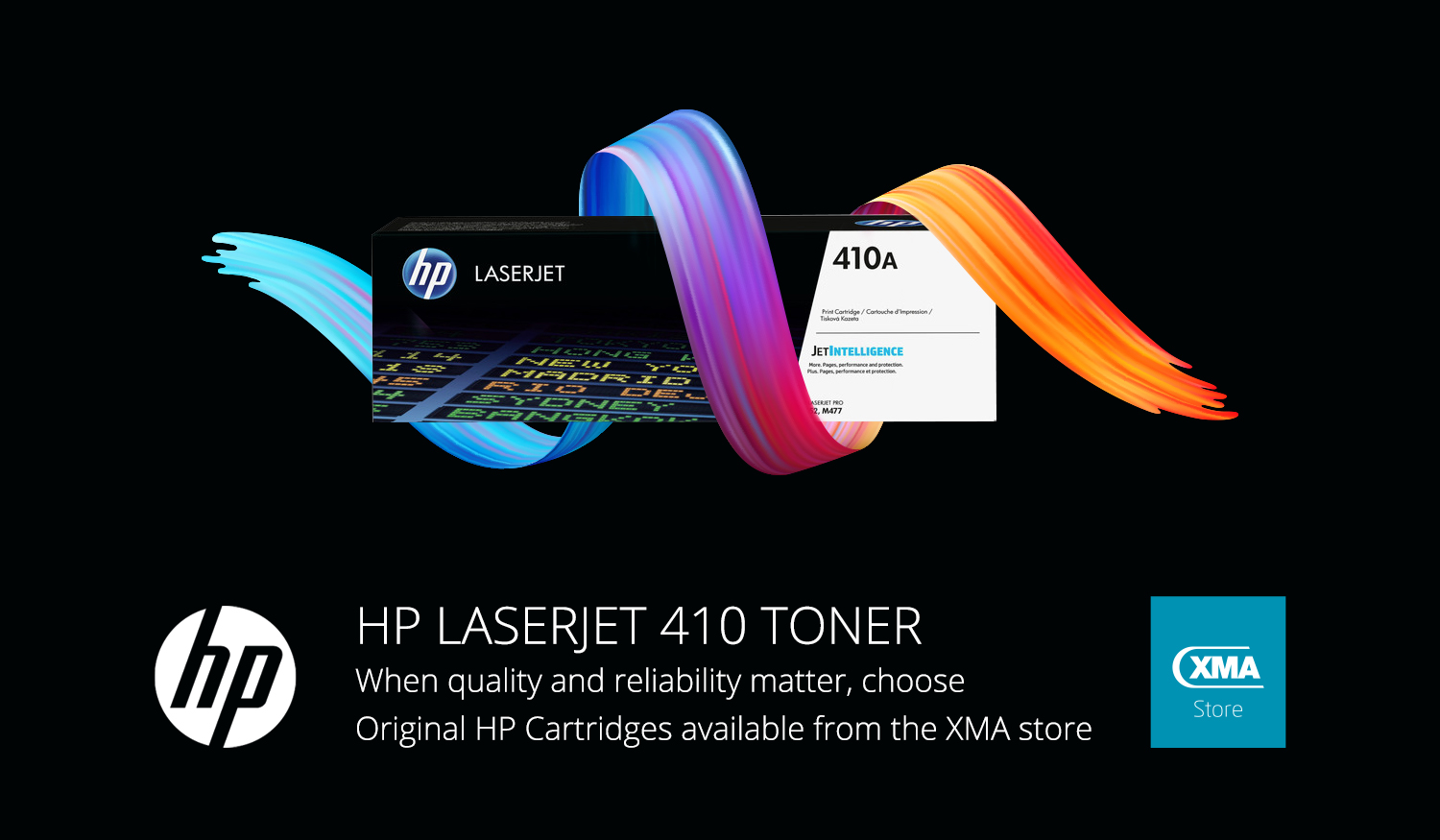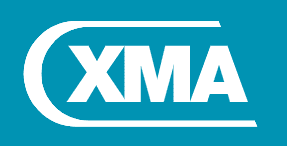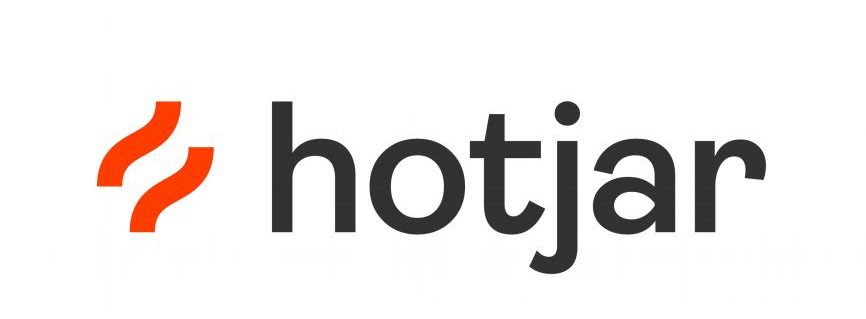XMA partners with HP to support schools in driving educational outcomes through technology
XMA is delighted to announce an exciting new partnership with HP Inc. HP has been selected as XMA’s education partner of choice, after a detailed review of the XMA education blueprint proved the brand offered the right hardware solutions for education, and was well placed to support schools.
Based on significant quantities of expertise, the new ‘Recommended by XMA’ range has been specifically built to meet the changing requirements of education, and designed to ensure any hardware solution remains relevant from a pricing, availability, security and safeguarding and product specification perspective.
HP products are tried and tested in the classroom, and benefit from over 30 years’ experience in the education market from XMA. Every product in the ‘Recommended by XMA’ range faces rigorous testing to ensure it reaches set standards for performance, durability, build quality, functionality, security and design, making sure they’re good enough for schools, while remaining commercially attractive. To further this cause, a range of payment options are available.
Building on a long and successful relationship across multiple industry verticals, John, Director of Commercial Programmes at XMA, said of the new education partnership:
“We are very excited to be partnering with HP to support education in the UK. Our combined expertise will allow us to deliver highly impactful technology solutions to schools and colleges, helping to make the experiences of teachers, students and administrators better and more exciting.”
Natalie Pilgrim, HP Channel Sales Manager UK&I:
“HP and XMA have worked together in Education for over 35 years. Not only do we share a very strong operational partnership together, HP and XMA ; we have long standing engagements with Microsoft and Google to support the integration of the wider education ecosystem for educators. We are proud of our joint partnership that has delivered brilliant outcomes across thousands of schools, colleges and Universities across the United Kingdom. We never sit still in how we design, integrate, train and serve our joint customers. Education is the heartbeat of what XMA and HP do and we will continue to work hard to maintain and grow the strong affinity we have with our many education customers across the UK.”
The range offered by XMA will continue to expand, with new products and services joining the ‘Recommended by XMA’ range over time, ensuring schools always have access to the best of tech.
Contact our education team to find out more on education@xma.co.uk
Microsoft Pricing Update
On Friday 19th August 2021, Jared Spataro, Corporate Vice President for Microsoft 365, announced an update to their commercial pricing – Please read the announcement here. Jared explains these price increases are due to the innovation Microsoft have delivered into their product suites over the past decade. During this time Microsoft have heavily invested and delivered in three key areas: communications and collaboration, security and compliance, and AI and automation.
Since the launch of M365, Microsoft have includes 24 new apps to the suites such as Microsoft Teams, Power Apps, Power BI, Power Automate, Stream, Planner, Visio, OneDrive, Yammer, and Whiteboard—and have released over 1,400 new features and capabilities.
The price increases will include:
Business Plan
– Microsoft 365 Business Basic (from $5 to $6)
– Microsoft 365 Business Premium (from $20 to $22)
Enterprise Plans
– Office 365 E1 (from $8 to $10)
– Office 365 E3 (from $20 to $23)
– Microsoft 365 E3 (from $32 to $36)
– Office 365 E5 (from $35 to $38)
The pricing is per user per month and the increases will apply globally with local market adjustments for certain regions. These changes will go into effect on 1st March 2022. There are no changes to pricing for education and consumer products at this time
Extending audio conferencing capabilities
One way Microsoft are vindicating the price increase is offering Audio Conferencing (RRP £3.02) with unlimited dial-in capabilities for Microsoft Teams meetings across enterprise, business, frontline, and government suites.
Currently only included with Microsoft 365 E5 and Office 365 E5, Audio Conferencing dial-in has become an important part of the complete Teams experience ensuring users will be able to join their Microsoft Teams meeting from virtually any device regardless of location, or even struggling with a bad internet connection. These features will be effective in March 2022.
Frontline Plans
– Microsoft 365 F3, Microsoft 365 F1 and Office 365 F3
Business Plans
– Microsoft 365 Business Premium, Microsoft 365 Business Standard and Microsoft
365 Business Basic
– Enterprise Plans – Microsoft 365 E3, Office 365 E3, Office 365 E1
Changes to Intune and EM&S E3/E5
The price increase announced on the 19th August 2021 are in addition to the price increase Microsoft announced in February 2021 relating to Intune and EMS E3 & E5 which came into effect this month, August 2021. The increases to Intune and EM&S were again based on Microsoft delivering significant investments in Microsoft Endpoint Manger and Microsoft Enterprise Mobility & Security (EM&S) over the past 18 months.
The new features being rolled out include:
– Microsoft Tunnel VPN (features for Android and iOS devices)
– Enhanced MacOS management capabilities – New endpoint analytics features
– Various enhancements to Microsoft Endpoint Manager
The % increases are outlined below and effect Academic, Corporate and Non-For Profits.
Effective planning, device deployment and management
Making the most of digital workspace transformation – Part 1
As working practices and norms continue to change and develop, and the debate about what works best rages on, the ability to adapt your business’ working methods quickly is growing in value. Of course, quick reactions shouldn’t come at the expense of business collaboration, or security. So, how do you clear this delicate obstacle?
The right technology and processes can make an enormous difference. Modern operating systems and software, such as Windows 10, continues to evolve and offer increased levels of flexibility for businesses and private users alike. The rise of the cloud further boosts this, with remote collaboration now near-seamless, as opposed to just a few years ago, when working from home could be challenging. This rate of development is showing no signs of slowing down.
As long-term partners of Microsoft, and experts in the use of technology like Windows 10, Microsoft Teams and Microsoft Azure, we’ve been trusted by many public and private organisations to help prepare them for the challenges presented by changing work habits. We achieve this through a distinct, four-step process we call the digital workspace quadrant.
Getting a sense of what you need to meet your unique needs should always start by taking a closer look at where your business currently stands. What technology do you currently use? How much do you pay for it? Are you using it to its full potential? Programs like Microsoft Teams can offer massive advantages to a business if used properly. We’ll take a close look to see what value can be extracted from existing tools, before looking at new ones.
From here, we’ll start to work with you to define and build your business case for change. To do this effectively, we’ll involve employees from across your business, in order to get a sense of their unique challenges, insights and ideas.
By combining this knowledge gained from your team with comprehensive audits on your technology, infrastructure and existing skillsets, we’ll pick out the ideal technological solutions for your challenges.
From here, our deployment and management expertise comes into play. We’ll make use of deployment tools like Windows Autopilot to ensure any new device delivery goes smoothly, without any setup time necessary.
We’ll also work to make device management significantly simpler. Windows Autopilot enables legacy app containerisation, which allows older Windows apps that are no longer supported to carry on running within the latest version of Windows 10. This means that, if you have an essential piece of bespoke software that’s out of date, you don’t need to immediately replace it, or jeopardise your wider security in the process.
Any technological or cultural change is a big step for a business to take, especially at a time when working culture is evolving so quickly. At XMA, we’ll work with you to make it as simple and painless as possible. From enabling new hybrid opportunities to making the most of existing tech and infrastructure, with our expert support and quality products from major vendors like Microsoft, digital workspace transformation can be that little bit easier.
To learn more about our digital workspace quadrant process, and how we can help you make the most of workplace transformation, keep an eye out for part two of this series, which focuses on keeping security high without restricting access.
Keeping hybrid working secure and staying in control
Making the most of digital workspace transformation – Part 2
As widespread digital workspace transformation continues to progress, and the working standards of individuals and businesses continues to evolve, keeping pace is increasingly important. If a business is behind the curve, it becomes ever more difficult to attract and retain talent. But with the desire for remote and flexible working being higher than ever, how can you meet this need without jeopardising your business security and continuity?
XMA can help you with this. In a previous blog, we looked at how we can use an effective planning and deployment strategy to help your business embrace new ways of working. In this second blog, we’ll be looking into the ways we can help you keep control of your network, without ever laying your hands on the devices your team uses.
When people work remotely, it’s likely that the range of devices available to them will go up. For example, some people might have a powerful PC at home, while others might prefer to work from a personal tablet or phone occasionally. While this boost to staff convenience is hard to ignore, it does raise several major security concerns. As these devices are outside your management control, they could be an ideal access point for hackers and viruses. As a result, many businesses are choosing to restrict access to managed devices only.
Whether you choose to allow a varied range of devices to use your network, or supply specific machines to each member of your team, we can help. Sophisticated endpoint and access management systems, enabled by Windows 10 technology, allow you to retain control while enabling an enormous level of flexibility for your teams. This will let you simplify automated provisioning, configuration management, and software updates for every single device that uses your network, regardless of operating system.
Device management is just part of the battle. Alongside close and customisable control over access, based on your specific needs and wishes, we’ll also develop a robust and personalised data security and risk management policy. This will consider the sensitivity of your data, how much access is required for each individual, and much more.
Using the latest software and zero-trust techniques from Microsoft, including Windows 10 Authenticator for two-factor authentication, we can start to create an environment that enables digital workspace transformation, without jeopardising security for the sake of access.
Enabling cultural change is naturally important for a business, especially right now, but doing it in a way that’s sensible, safe and suitable for you is incredibly important. It’s not something to be rushed, you need to pick the right path for you. Our team will help you to pick the right path, and use the best technology from Microsoft, along with other major vendor partners, to make it a reality.
We’ll be continuing our blog series on digital transformation in the weeks to come, so keep an eye out for part three. If you’ve not read the first part, or would like a reminder, you can find it here
Brexit Committee Update March 2021
Brexit Committee News Update – March 2021 Update
Now we are approaching the end of Q1 2021, the reality of the Brexit agreement is emerging with the anticipated delays becoming apparent. As a responsible and proactive partner to our customers and suppliers, we have planned throughout 2020 to address all anticipated outcomes, and we are operating processes that allow trading in the UK and EU to be achieved in the most efficient way within the new regulations.
Despite continued pressure on the international supply chain through Covid restrictions, IT parts constraints, continued exceptional demand and varying interpretation of the new rules across Europe, our experience and preparation has limited these delays for our customers. Rest assured XMA is working with all of our customers to remain at the front of service innovation to remove these delays and will continue our Brexit committee and updates until we recognise that all trading conditions have returned to a consistent and effective
What has changed?
Our customers in England, Wales and Scotland
There will be no change in process from XMA, but we have ensured all of our Suppliers are compliant with all new import requirements to maintain consistency in supply and minimise any unnecessary delays at border points.
Our customers in Northern Ireland
The UK and EU agreed and implemented a solution to minimise disruption regarding cross border
movements. XMA have gained the specific EORI number (XI) to maintain our ability to supply our customers in Northern Ireland and we are also recording the commodity codes and country of origin of products supplied. For all customers in Northern Ireland we will require their EORI number and all deliveries will operate on a Delivered Duty Paid (DDP) basis under Incoterms as this remains a UK to UK relationship. Further information on the specific requirements for trading in Northern Ireland can be found here
Our customers in Europe
XMA have a UK EORI (Economic Operators Registration and Identification number) to facilitate the movement of goods into the EEA, which became a requirement in 2021. We also record the Full commodity codes and country of origin for all products supplied and now supply commercial invoices for all shipments. For all orders into Europe we will require our customers to provide their EORI number and all deliveries will operate on a Delivered at Place (DAP) basis under Incoterms.
The future
The biggest concern over Brexit was uncontrolled delays of products arriving into the UK or being delivered to Europe, and it does appear there are initial challenges whilst new processes are fully adopted by all stakeholder groups. Overall, XMA are confident we are providing our customers with correct and effective advice to minimise any delays. We will continue to monitor this situation and where any further risk of delays are identified, work with our customers to mitigate the risk or look at alternative solutions.
If you have any questions about how XMA can support your organisation post Brexit, please contact your Account Manager or direct enquiries to: approvals@xma.co.uk
XMA named supplier as part of the Software Licence Resellers Agreement (SLRA)
XMA have been named one of few successful suppliers on the Software Licence Resellers Agreement (SLRA) framework for the provision of software license reseller services to cover Microsoft, Adobe, VMWare and other software and related services. XMA were named as suppliers on the following Lots:
Lot 1 – Microsoft
Lot 3 – VMware
Lot 4 – Other Software
Lot 5 – Services
The initial framework agreement runs for a three year period and is managed by the Southern Universities Purchasing Consortium (SUPC).
Andy Wright, Chief Commerical Officer at XMA had this to say:
“We are delighted to be selected to partner the Southern University Purchasing Consortium for the provision of software licence services. We are dedicated to providing the best value and service to the education sector and we are able to achieve this through agreements such as the SLRA. Education technology has never been more important than it is now and we are committed to enabling better education through the use of technology”
The new agreement went live on the 22nd February 2021.
Fluid learning spaces: Returning to the classroom
With the hope of the return to the ‘new normal’ this year, students will be preparing to return to schools, colleges and universities. But the lecture halls and classrooms are not the same ones they left behind. Factors such as social distancing and the huge growth in remote learning have changed dramatically, and perhaps permanently.
As students begin to make their careful return to their schools and universities, educational institutions have an unprecedented responsibility to ensure that studies in this new phase are effective and safe. Learning environments must support whatever degree of remote participation is required in the weeks, months and years ahead.
Today’s learning spaces need to be more flexible in terms of both the physical places students attend and the digital spaces where they connect to lectures and lessons and to educators and peers. What does this mean?
Logistical challenges of the ‘new normal’
Many educational institutions are now finding that more thought must go into scheduling. Because of the need for social distancing and other measures, a greater degree of planning and care has to be taken when determining which rooms are used for which lessons. In order to maintain the necessary distances between students (and educators), lecture hall or classroom capacities are reduced drastically. For instance, if every other seat in a lecture theatre is left empty, that cuts its capacity by half.
Decoupling purpose and technology from physical spaces
Here we come to the importance of flexibility. Modern technology has a key role in helping you use all your available space as effectively as you can to provide the best – and safest – education possible. That’s because unlike the digital whiteboards of previous times, firmly attached to a bracket on a wall of a specific room, today’s devices aren’t necessarily locked down to one space.
Modern, mobile and highly versatile solutions such as the Microsoft Surface Hub 2S can be easily moved to wherever they’re needed, set up quickly and used to bring together remote and on-site students and support the hybrid learning experiences they need. This agility will be a key characteristic of how education is delivered as we move forward. Spaces and their uses are becoming more fluid, quickly and easily shaped into fully equipped, connected, hybrid learning environments by flexible, powerful technology.
However, achieving more fluidity with your physical space is only part of the solution. Succeeding with hybrid learning also means breaking down the barriers between physical and digital learning spaces to unify and enhance student experiences.
Checklist: Can you support hybrid learning?
It’s time to talk about learning experiences. To make hybrid learning really work, educational institutions need to be able to answer these questions with a ‘yes’:
- Is setting up and starting hybrid sessions simple for educators/technicians?
- Can remote students connect to sessions quickly and with no hassle?
- Are educators able to teach both remote and on-site students effectively?
- Can you ensure learning experiences are clear, immersive, and engaging?
- Is your technology platform familiar and accessible to students and staff?
- Can remote students participate and contribute confidently and comfortably?
- Are on-site and remote students able to interact and collaborate well together?
Ultimately, the success of a hybrid learning environment comes down to bringing everyone together in one learning space that unifies the digital and physical, where remote learning and teaching deliver results as good as on-site, and where students feel fully part of learning experiences however they participate. And the right technology is necessary to achieve that.
If you’d like to find out more about XMA Hybrid Learning solutions, contact us today.
For more information about the Surface Hub 2S, click here
Brexit Committee Update January 2021
Brexit Committee News Update – January 2021 Update
XMA welcome the news and certainty provided through the late trade deal between the UK and EU at the end of 2020. This has removed the unwelcome risk of tariffs on the products that could have occurred under WTO terms and allows for XMA and our customers to proceed into 2021 with confidence.
Whilst the trade deal removes additional adjustments, exiting the EU still provides changes in the way that products are imported into and exported from the UK, and XMA have ensured our compliance to all new trading requirements in 2021 to protect our customers from unnecessary delays.
What has changed?
Our customers in England, Wales and Scotland
There will be no change in process from XMA, but we have ensured all of our Suppliers are compliant with all new import requirements to maintain consistency in supply and minimise any unnecessary delays at border points.
Our customers in Northern Ireland
The UK and EU agreed and implemented a solution to minimise disruption regarding cross border
movements. XMA have gained the specific EORI number (XI) to maintain our ability to supply our customers in Northern Ireland and we are also recording the commodity codes and country of origin of products supplied. For all customers in Northern Ireland we will require their EORI number and all deliveries will operate on a Delivered Duty Paid (DDP) basis under Incoterms as this remains a UK to UK relationship. Further information on the specific requirements for trading in Northern Ireland can be found here
Our customers in Europe
XMA have a UK EORI (Economic Operators Registration and Identification number) to facilitate the movement of goods into the EEA, which became a requirement in 2021. We also record the Full commodity codes and country of origin for all products supplied and now supply commercial invoices for all shipments. For all orders into Europe we will require our customers to provide their EORI number and all deliveries will operate on a Delivered at Place (DAP) basis under Incoterms.
The future
The biggest concern over Brexit was uncontrolled delays of products arriving into the UK or being delivered to Europe, and it does appear there are initial challenges whilst new processes are fully adopted by all stakeholder groups. Overall, XMA are confident we are providing our customers with correct and effective advice to minimise any delays. We will continue to monitor this situation and where any further risk of delays are identified, work with our customers to mitigate the risk or look at alternative solutions.
If you have any questions about how XMA can support your organisation post Brexit, please contact your Account Manager or direct enquiries to: approvals@xma.co.uk
How technology has supported change in 2020
No one can deny that 2020 has been a year of change. The COVID-19 pandemic has forced changes in working practises and re-invented our way of life across the world. Technology has emerged as the main contributor in supporting this change. We take a look back at how technology has supported change in 2020.
The growth of video conferencing
The growth of the video conferencing industry has touched the lives of most, whether it be for work video conferences, keeping in touch with your friends and family, or becoming quiz masters via. Zoom! Whilst many industries have sadly seen declining figures this year, the video conferencing industry is by no means in the same situation. In February, when the COVID-19 pandemic was in its infancy, one provider of video conferencing technology saw a surge of 15% of its stock price, and it is predicted by the time the pandemic settles, this provider could potentially double its value.
2020 is said to have been the ‘year of remote working’ with many businesses now making the decision to change their organisational structure to adopt a ‘flexible working’ policy, or some even moving to an entirely remote organisational structure. There are many benefits to this, especially for small businesses who can benefit both financially, and improve their ability to attract and retain talent to drive their businesses forward. Research has demonstrated that 57% of small business will continue to work at home after orders are relaxed by the government. Many of the world’s largest technology employers are also talking about introducing, or building on their remote working models, including Facebook, Twitter and Google. At first, this move feels daunting, however video conferencing technology has allowed organisations to prove that productivity is the same, if not higher when employees work remotely. This technology has provided organisations with the confidence to change and adapt.
In 2018, the global video conferencing market was valued at just over 3 billion dollars. This is estimated to more than double to 6.4 billion dollars by 2026. The use of video conferencing technology in 2020 has been the driver of transformative business decisions, which has already seen many short-term benefits, including productivity, collaboration, flexibility, mental health and well-being and sustainability.
Environmental impacts
Technology adopted during the pandemic has enabled organisations to make changes in their working structure. Not only does this have huge financial and productivity benefits mentioned, but the environment has also seen benefits as a result.
The productivity benefits of working from home centre around the loss of the need to commute. With the average person’s work commute at 60 minutes each way, this has saved on average a staggering 10 hours per week spent mostly in the car, on the train or bus. As a result of this, the European Environment Agency’s data confirms large decreases in air pollutant concentrations, of nitrogen dioxide (NO2) concentrations, largely due to reduced traffic and other activities, especially in major cities under lockdown measures.
The use of technology has demonstrated to employers that their employees can effectively work from anywhere, with best placed technology. In turn, organisations can now contribute to a greener and more sustainable future.
Cyber-security threat
Unfortunately, along with great innovation and change for the better we have seen across 2020, we have inevitably seen a rapid rise in cyber-attacks.
In September, the National Cyber Security Centre (NCSC) issued an alert to Universities and the education sector after seeing a rapid rise in cyber-attacks throughout August. “The NCSC dealt with several ransomware attacks against education establishments in August, which caused varying levels of disruption, depending on the level of security establishments had in place.” A ransomware attack will usually involve the cyber criminals targeting your most valuable data, encrypting the data, and holding your data hostage while they attempt to extort money or information.
As an industry, we have moved on from treating ‘security’ as a single item or product. We must continue to critically examine our security capabilities end to end. Although the increased use of technology remotely may be a contributing factor to the increase in cyber-attacks , it can also be the solution to protect against them. To get advise on what you can do to minimise risk, please see our blog ‘Protection is Power’ .
Preparing for 2021, the year of the ‘New Normal’
It’s rare for businesses and institutions to face huge shifts in working practice. And, on those occasions when a firm chooses to change location, review working practices or update multiple offerings, leadership would usually demand a detailed plan of action and a period of time to execute it. Recent events have – for many businesses – forced unforeseen change. So, where contingency planning hasn’t provided all the answers for your business, how will you create the plan for your new way of working? Terry Chana, our XMA Workspace Solution Director has outlined 4 steps to ‘Navigate the New Normal’.
- Preparing for Business Continuity
- Developing a Digital Capability
- Balancing Innovation and Security
- Reintroducing the Physical Workspace
Read more.
Having made bold steps into the future, organisations who strengthen their position and continue to ask questions will find their future opens up in a way they may previously have missed. The fact is that many organisations too scared to develop agile solutions in the past will have either leapt to make these changes in haste, or struggled to survive. Having taken those steps to change, now is the time to review, refocus and reinforce – to ensure these changes aren’t short-term fixes but strong, positive developments which will lead to future growth. It’s important we look to the future, and seek opportunities to collaborate with those who can support us going forward.

XMA support Crisis in their mission to end homelessness
This year has seen trials and tribulations no one ever expected, and not-for-profit organisations have taken a massive hit due to the cancellation of fundraising events and the financial difficulties resulting from the pandemic.
This Christmas, XMA employees from across multiple locations came together (virtually) to support Crisis in their mission to end homelessness.
Virtual fundraising saw staff raise £3,630. All funds raised will be donated to Crisis to help toward changing a life this Christmas. A gift of a Crisis Christmas will give someone who is homeless access to:
-
- Friendship and support from volunteer befrienders
- Essential food and festive treats
- A place to stay over Christmas
- Year-round support including training and education
We’d like to thank all our staff for their efforts in supporting our fundraising efforts this Christmas!






 Monitoring by Hotjar
Monitoring by Hotjar